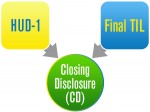Why Fla. is the Best State for Retirement

Sunshine, beaches and a laid-back lifestyle have made Florida one of the top destinations for retirees looking to live out their golden years in peace and comfort.
Now a new study from WalletHub.com has named the Sunshine State the best place in the U.S. to retire based on its affordability, quality of life and healthcare. The website pointed out that nearly a third of non-retirees have no retirement savings or pension and said it made its choices to help retirees find the states that offered the most bang for their buck.
Rounding out the top five for 2016 after Florida were Wyoming, South Dakota, South Carolina and Colorado.
At the bottom? Vermont, Connecticut, Hawaii, Washington D.C. and Rhode Island.
Here are the top six reasons why Florida is the best place to retire, according to WalletHub.
Hole in one!
From Seminole Golf Course in Juno Beach (the state’s top ranked links, according to GolfDigest) to Trump National Doral, Florida has the most golf courses per capita in the nation.
Company
Looking for new friends? You won’t be lonely in the Sunshine State, which has the highest percentage of people aged 65 or over of any state.
Out on the town
It’s not Broadway, but theatergoers in Florida have more and better options than ever before. The state has the sixth-most theaters per capita in the U.S.
Help at home
The cost of hiring a nurse and other in-home help can break the bank for many seniors. But Florida has the eighth-lowest cost of in-home services of any state.
Low taxes
Many retirees don’t realize they may need to pay federal and state taxes on Social Security income and withdrawals from IRA and 401(k) funds. Florida’s low taxes make it the 10th-best state for retirees come tax season, according to WalletHub.
A night at the museum
Miami’s burgeoning cultural scene means locals don’t have to travel to New York for their museum fix. From the Pérez Art Museum Miami to the under-construction Patricia and Phillip Frost Museum of Science to HistoryMiami, South Florida museums are on the upswing. Nationwide, Florida has the 15th-most museums per capita.
So what are you waiting for? Florida is calling.
Miami Herald, Written by Nicholas Nehamas











 Kim N. Bregman
Kim N. Bregman